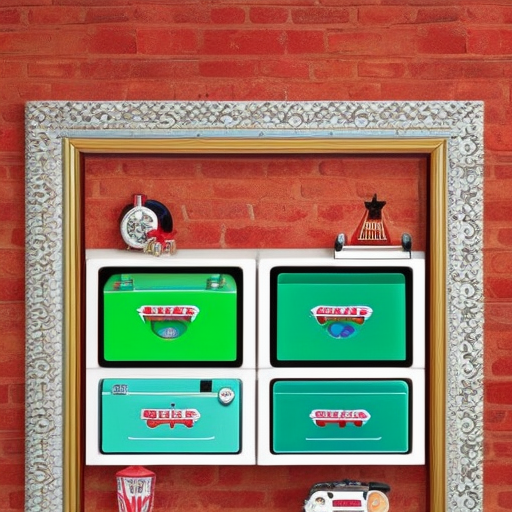Retro: A Nostalgic Journey into the Past
Retro, derived from the Latin word “retro,” meaning backward or behind, refers to a cultural trend that embraces and celebrates styles, designs, and aesthetics from the past. It is a nostalgic journey into bygone eras, evoking a sense of familiarity and sentimentality. Retro can encompass various aspects of popular culture, including fashion, music, art, design, and even technology.
1. Fashion: Retro fashion involves reviving and reinterpreting styles from previous decades. It often draws inspiration from the 1920s to the 1990s, with each era having its distinctive characteristics. For example, the 1950s are known for their full skirts and cinched waists, while the 1970s are associated with bell-bottom pants and psychedelic prints. Retro fashion allows individuals to express their personal style while paying homage to the past.
2. Music: Retro music refers to the revival of older musical styles or the creation of new music that emulates the sounds of the past. It can range from rock ‘n’ roll and Motown from the 1950s and 1960s to disco and funk from the 1970s. Artists like Amy Winehouse and Bruno Mars have successfully incorporated retro elements into their music, creating a nostalgic vibe that resonates with audiences.
3. Art and Design: Retro art and design encompass various movements and styles from the past. It can include mid-century modern design, characterized by clean lines, organic shapes, and vibrant colors. Retro art often draws inspiration from pop art, with its bold and graphic imagery. Artists like Andy Warhol and Roy Lichtenstein were pioneers of this movement, using everyday objects and popular culture references in their work.
4. Technology: Retro technology refers to the revival or reimagining of older devices and gadgets. This can include vintage-inspired record players, typewriters, and cameras. Retro technology combines the charm of the past with modern functionality, appealing to those who appreciate the aesthetics and craftsmanship of older devices.
5. Popularity and Influence: Retro has gained significant popularity in recent years, with many people embracing the nostalgia and uniqueness it offers. It allows individuals to stand out from the crowd and express their individuality through their style, music taste, or home decor. Retro-inspired clothing brands, music festivals, and vintage stores have emerged, catering to this growing demand.
6. The Role of Social Media: Social media platforms like Instagram and Pinterest have played a crucial role in the resurgence of retro culture. These platforms provide a space for individuals to share and discover retro-inspired content, from fashion and home decor to music playlists and art. Influencers and celebrities often embrace retro aesthetics, further fueling its popularity.
7. The Future of Retro: As time continues to progress, the definition of retro will evolve. What is considered retro today may not be the same in the future. However, the appeal of nostalgia and the desire to revisit the past will likely remain. Retro will continue to inspire and influence various aspects of culture, allowing future generations to connect with and appreciate the styles and trends of previous eras.
In conclusion, retro is a cultural trend that embraces and celebrates the styles, designs, and aesthetics of the past. It encompasses various aspects of popular culture, including fashion, music, art, design, and technology. Retro allows individuals to express their personal style, evoke nostalgia, and connect with previous eras. With the rise of social media and the growing demand for unique and nostalgic experiences, retro culture is likely to continue thriving in the future.












